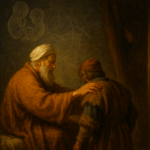
Isaac and Rebecca: Deception or Wigner’s Friend Paradox?
Synopsis The narrative of the “stolen blessings” in Parashat Toldot presents a profound moral paradox: How could Rebecca, a righteous prophetess, and Jacob, the archetype

Synopsis The narrative of the “stolen blessings” in Parashat Toldot presents a profound moral paradox: How could Rebecca, a righteous prophetess, and Jacob, the archetype

Chayei Sarah and the Physics of Makifim and Pnimim Synopsis This essay reveals a profound numerical convergence between Torah and quantum physics through the number

(Parshat Vayeira, Genesis 21:14-21) Hagar and Ishmael are dying of thirst in the desert. In her despair, Hagar places her son under a bush and

There is not a Shabbos in which we do not read the parasha of Lot (Bereshis Rabbah 51:9) The Kabbalistic Dimension: Hidden Unities and Dimensional
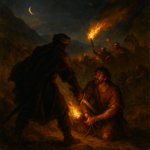
When Abram heard that his kinsman had been taken captive, he mustered his trained men… and went in pursuit. (Genesis 14:14) Abraham just separated from

And the Lord said to Avram, after Lot had separated from him… “I will make your seed like the dust of the earth.” (Genesis 13:14–16)

VeZot HaBerachah and the Hoshana Rabbah custom of striking the ground with willow twigs tl;dr Incense (ketoret) means “binding,” which we interpret as entanglement; the
“Ein simchah ke’hatarat ha-sfeikot”—there is no joy like the resolution of doubt. On the eve of Rosh HaShanah, our sages describe a cosmic pause: the
By Alexander Poltorak לע”נ אבי מורי, אברהם שמשון ע”ה בן ראובן Between the jubilation of Rosh HaShanah and the solemnity of Yom Kippur lie ten
The ten days between Rosh HaShanah and Yom Kippur are called Aseret Yemei Teshuvah (Ten Days of Penitence). As the prophet says: Seek G-d while

Alexander Poltorak Abstract This essay addresses the anigmatic statement of the Jewish Sages, stating that G-d created this world with the letter Heh and the
By Alexander Poltorak Introduction In the first installment of this essay, “Collapsing the Wave Function of Urim and Thummim,”[1] we discussed the inherent duality of
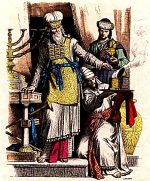
By Alexander Poltorak Dedicated to the refuah shaleimah (a complete and speedy recovery) of David ben Leah And thou shalt put in the breastplate of
By Alexander Poltorak This essay is dedicated to the Upsherenish of our dear grandson, Tzemach Asher Noam, Sheyiḥiyeh, which took place today in Houston. May
By Alexander Poltorak The Tree of Life and the Tree of Knowledge as Metaphors for the Wave Function and Measurement Summary This essay proposes a
And it came to pass, when he was come near to enter into Egypt, that he said unto Sarai his wife: “Behold now, I know

This essay explores a novel parallel between quantum mechanical principles and the biblical creation narrative through etymological analysis of the Hebrew terms “erev” (evening) and
Look forth from Thy holy habitation, from heaven, and bless Thy people Israel, and the land which Thou hast given us, as Thou didst swear

The Torah portion Tzav describes a ritual performed by Moses in consecrating Aaron as the High Priest (Kohen Gadol) and his sons as priests (kohanim):
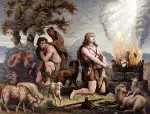
In his commentary on this week’s Torah Portion, Yitro, Rabbi Chayim Vital, writing in the name of his teacher, the Ari-zal, states that Abel was
The current Torah portion Beshalach tells about the splitting of the Sea of Reeds. As I discussed in my essay, “Collapse and Revelation,” the splitting
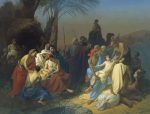
The story of Joseph and his brothers, described in the Torah portion of Vayeshev, presents many problems. Classical biblical commentators interpret the conflict between Joseph
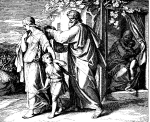
Like most Jewish families worldwide, last Shabbat, the conversation revolved around the situation in the Middle East and the war in Gaza. The question was,

And ye shall take you on the first day the fruit of goodly trees, branches of palm-trees, and boughs of thick trees, and willows of
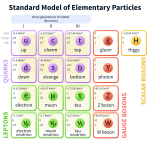
Introduction What could the Standard Model of particle physics possibly have in common with biblical accounts of the Israelites’ travels in the Sinai Desert, Kabbalistic

Cartesian dualism, or mind-body dualism, formulated by the French scientist, mathematician, and philosopher René Descartes (1596–1650), holds that the body and the mind (which he
Structurally identical biblical accounts of creation, destruction, and restoration are viewed as a manifestation of dialectic triad thesis-antithesis-synthesis.
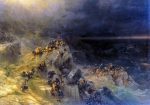
Noah’s flood was a cataclysmic event with no parallels in recorded history. All of humanity (along with flora and fauna)—except for Noah and his family
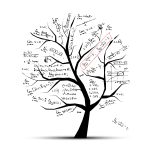
To Mendel Almost three years ago, in December of 2019, I posted an essay, “The Tree of Knowledge as a Metaphor for Superposition of States

Ki Tavo And it shall come to pass, when the Lord thy God shall bring thee into the land whither thou goest to possess it,

The collapse of the wave function is the process of revealing hidden possibilities. Reducing uncertainty reveals information. Until the wave function collapse, the system is
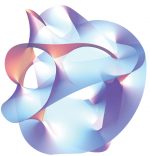
And they made their lives bitter with hard service, in mortar and in brick… Exodus 1:14 On a literal level, the Egyptian exile (Galut Mitzrayim)

And afterwards she bore a daughter, and called her name Dinah. (Genesis 30:21) In my previous essay, “The Conflict Between Joseph And His Brothers—A Gender
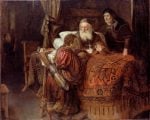
And Rebekah spoke unto Jacob, her son, saying: “Behold, I heard thy father speak unto Esau thy brother, saying: Bring me venison, and make me

And Abraham took another wife, and her name was Keturah. (Genesis 25:1) Keturah: This is Hagar. She was called Keturah because her deeds were as

And Abraham took another wife, and her name was Keturah (Genesis 25:1) As I discussed in the earlier essay, “Yom Kippur – Disentangling the
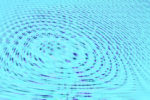
This is My covenant, which ye shall keep, between Me and you and thy seed after thee: every male among you shall be circumcised. And

Michael Frayn’s 1998 play, Copenhagen, concerns a meeting between two great physicists, Niels Bohr and Werner Heisenberg, in 1941 in Copenhagen. In this play, the
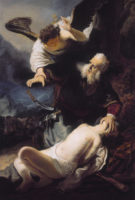
And He said: “Take now thy son, thine only son, whom thou lovest, even Isaac, and get thee into the land of Moriah; and offer

A light shalt thou make to the ark…with lower, second, and third stories shalt thou make it. (Genesis 6:16) We mentioned in the previous posts
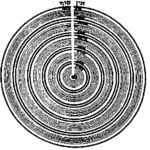
Sweeping Infinities Under the Rug—or Renormalization Having dealt with internal contradictions in the previous section (see Physics of Tzimtzum I — The Quantum Leap and

In the previous post “Physics of Tzimtzum I—The Quantum Leap”, we gave a general overview of the mystical doctrine of tzimtzum—the cornerstone of Lurianic Kabbalah.

Introduction “In the beginning G‑d created the heavens and the earth.” (Genesis 1:1) “In the beginning G‑d created the heavens and the earth,” the Torah
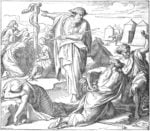
A Study in Form and Matter And Moses prayed for the people. And the Eternal said unto Moses: “Make thee a fiery serpent, and set it

In the beginning, G‑d created the heaven and the earth…[1] (Genesis 1:1) Classical biblical commentators have given the first words of the Torah many
It is related that on the day that Rabbi Yehuda HaNasi died, the Sages decreed a fast, and begged for divine mercy so that he
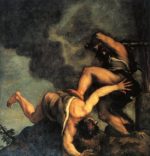
…And Abel was a keeper of sheep, but Cain was a tiller of the ground. And in process of time it came to pass, that Cain

Now the Serpent was more cunning than any beast of the field which the Eternal G‑d had made. (Genesis 3:1) When G‑d placed Adam

And the Eternal G‑d said: “It is not good that the man should be alone; I will make him a helpmate opposite him.” (Genesis 2:18)

As we discussed in the earlier post, The Tree of Knowledge as a Metaphor for Superposition of States and Heisenberg’s Uncertainty Principle, the Heisenberg uncertainty
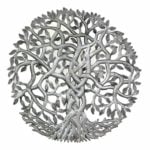
As always in science, every answered question breeds new questions. Now that we understand that the Tree of Life and the Tree of Knowledge are

And out of the ground made the Lord G‑d to grow every tree that is pleasant to the sight, and good for food; and the
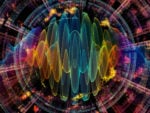
Strings vibrate, Souls tremble, Angels are running and returning, G‑d is touching and not touching – The rhythms of the universe… Nothing stays still… all
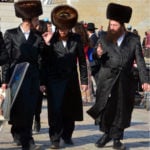
Today is Chol Hamo’ed Sukkot – the intermediate days between the first and the last days of the holiday of Sukkot. These days are not

And the Lord spoke unto Moses, saying: ‘Command the children of Israel, and say unto them: When ye come into the land of Canaan, this

Then drew near the daughters of Zelophehad …. of the families of Manasseh, the son of Joseph; and these are the names of his daughters:

The Lord spoke to Moses, saying: Speak to the children of Israel and you shall say to them that they shall make for themselves fringes

Meditations on the Maaseh Merkavah – IV This is the fourth and the final installment in the series of posts related to Ezekiel’s prophesy, Ma’aseh
(A popular summary of the paper “Towards Futuristic Interpretation of Quantum Mechanics” by Alexander Poltorak being currently prepared for publication) Quantum mechanics (QM) is one
Meditations on the Maaseh Merkavah – III This is the third installment in the series of posts related to the Ezekiel’s prophesy, Maaseh Merkava, “The

And all the tithe of the herd or the flock, whatsoever passeth under the rod, the tenth shall be holy unto the Lord.” (Leviticus 27:32)

And ye shall take you on the first day the fruit of goodly trees, branches of palm-trees, and boughs of thick trees, and willows of

And whosoever lieth carnally with a woman, that is a bondmaid, designated for a man, and not at all redeemed, nor was freedom given her;
In my post, “Ye Shall be Disentangled,” I suggested that the verse: “Ye shall be holy, for I, the Lord, your G‑d, am holy” (Levit.
Welcome to the premiere of our first film, Quantum Torah. You can watch the film here: Don’t forget to subscribe to my channel here:

I am excited to announce that the premiere of our film “Quantum Torah” is scheduled for this Friday, March 1st. You can see the trailer
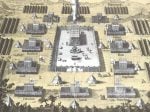
Vectors, Spins, and Gender Speak to the children of Israel, and have them take for Me an offering; from every person whose heart inspires him
Coming soon to a theater near you. Watch a trailer:
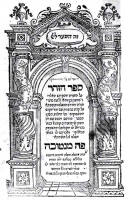
In the six hundredth year of Noah’s life, in the second month, on the seventeenth day of the month… all the fountains of the great
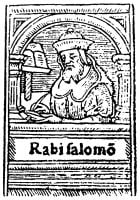
And G‑d saw all that He had made, and behold it was very good, and it was evening and it was morning, the sixth day.
The Torah portion, Re’eh, talks about the Sabbatical Year—in Hebrew, Shemitah—the Seventh year. When the Sabbatical year comes, all loans are forgiven, and Jewish servants

The Torah portion Re’eh, begins with the verse: Behold, I set before you this day a blessing and a curse. (Deut. 11:26) The first word

This is what Haman did not understand. Even at the highest level, where there is a complete symmetry between Jacob and Esau, G‑d chooses Jacob—a
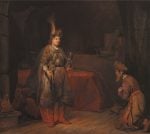
In physics, we seek Grand Unification, also known as the Theory of Everything. The Standard Model describes three out of the four fundamental forces: the
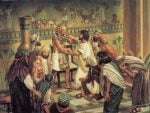
In the Torah portion Miketz, Pharaoh has two dreams. He wakes up agitated and calls on all the wise men of Egypt to interpret his
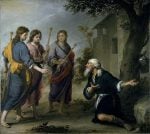
And he [Abraham] lifted up his eyes and looked, and, lo, three men stood over against him… (Genesis 18:2) On this blog, we often discuss
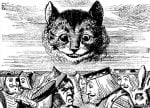
In memory of my father, Abraham Shamshin ben Reuven, ע”ה For those of us who can’t get enough of Schrödinger cat, comes a new

Ye are standing this day all of you before the Lord your G‑d: your heads, your tribes, your elders, and your officers, even all the
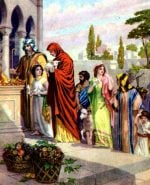
…Thou shalt take of the first of all the fruit of the ground, which thou shalt bring in from thy land that the Lord thy

And on the day that the tabernacle was reared up, the cloud covered the tabernacle, even the tent of the testimony; and at even there

Continuing the theme of my last post, Mishkan – a Metaphor for Quantum Reality, the analogy between the Tabernacle (“Mishkan”) and quantum reality goes even

And when the Tabernacle setteth forward, the Levites shall take it down; and when the Tabernacle is to be pitched, the Levites shall set it
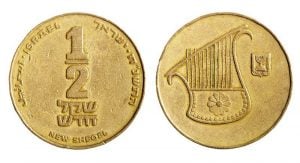
This they shall give, everyone who goes through the counting: half a shekel according to the holy shekel. Twenty gerahs equal one shekel; half of

At the end of the weekly portion, Tetzaveh, the Torah speaks of the burnt offerings (Heb. qorbanot) and the incense offerings (Heb. qetoret). The Lubavitcher

Ultimately, I suppose Einstein was right—G‑d does not play dice. So when Haman reached that spiritual level through casting the lots, he discovered the true

And thou shalt make two cherubim of gold; of beaten work shalt thou make them, at the two ends of the ark-cover. And make one
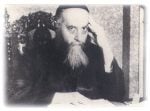
Today, Yud Shvat, is the yartzeit (anniversary of passing) of the sixth Lubavitcher Rebbe, Rabbi Yosef Yitzchak Schneersohn, a.k.a. the Rebbe Rayatz, or the Frierdiker

The Talmud (tr. Shabbat) discusses two opinions about the manner in which we are to light Chanukah menorah. According to Hillel, we light the first

As I wrote in my post, Schrödinger Menorah: Burning And Not Burning, the Lubavitcher Rebbe, Rabbi Menachem Mendel Schneerson, explains the miracle of Chanukah as

The miracle of Chanukah revolves around a single-day-supply of olive oil burning for eight days during the rededication of the Holy Temple in Jerusalem (Bet
And these are the years of the life of Ishmael: one hundred years and thirty years and seven years (Gen. 25,17) You might say the

According to the Saadia Gaon, these two Torah portions – Nitzavim and Vayelech – are really one portion, which sometimes is split into two. In the

There is a dispute in the Talmud as to when the world was created. According to Rabbi Eliezer, the world was created in the month
In my last year’s post “Balak – Interference of Souls,” I suggested that Balak needed Balaam (Bilam) to cause constructive interference to make the curse

The blessings and the admonitions of Bechukotai (Leviticus 26:3–27:34) are viewed as the result of entanglement and disentanglement with G‑d respectively.
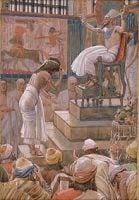
This week, we read in the Torah portion Vayigash (Gen. 44:18–47:27) about Joseph revealing himself to his brothers and Jacob coming to Egypt with his family. This
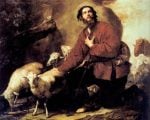
Synopsis This essay reads Jacob’s agreement with Laban over the streaked, speckled, and spotted sheep as far more than an odd detail in an ancient
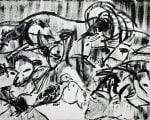
And he took him all these, and divided them in the midst, and laid each half over against the other… And it came to pass, that,
When G‑d created the first humans, Adam and Eve (Chavah), He created them as one. And G‑d created man in His own image, in the
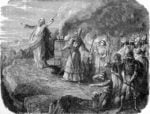
Balak the son of Zippor saw all that Israel had done to the Amorites. Moab became terrified of the people, for they were numerous, and
What came first, the Schrödinger cat or the fig of Rabbi Akiva? You be the judge. Today we present a guest post by Rabbi Dr. David

Speak to the children of Israel and you shall say to them that they shall make for themselves fringes on the corners of their garments,
Today is the eighth day of the month of Tevet. On the 8th of Tevet of the Jewish year 3515 (246 BCE), the Torah was
Today is Yud Tes Kislev — Rosh HaShanah of Chasidut. Today I received two gifts, which I’d like to share. Lately, while learning Samach Vov,
A man once came to a rabbi with said news – his cat just died. Rabbi politely expressed his sympathy to the owner of the
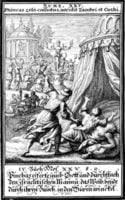
A strange episode at the end of the last Torah portion, Balak, where Phinehas (Pinchas) slain a Jewish prince caught in the act with a
And G‑d opened the mouth of the ass, and she said to Bilam: “What have I done to you, that you have struck me these
…And they prophesied in the camp. (Num. 11:27) In the Torah portion Behaalotecha, there is an interesting narrative: And the Lord said unto Moses: ‘Gather
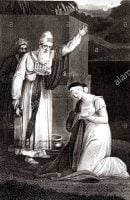
The story of Sotah, a suspected adulteress, is very troubling on the first blush. Why would a woman be subjected to such humiliation? The Lubavitcher
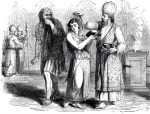
In quantum mechanics, the state of a physical system is described by the so-called wave function (or the “wavefunction”). All attempts by Schrödinger, who first
Ye shall be holy, for I, the Lord, your G‑d, am holy. Leviticus 19:2 This Torah portion begins with an astonishing statement: Speak unto all

Today is Rosh Chodesh Adar Bet – the New Moon and the beginning of the second month of Adar. If we ever to have a month
Reading the Haftorah this Shabbat brought to mind scenes from the 2004 Republican National Convention in Madison Square Garden in New York City where attendees where
And let them make me a Sanctuary that I may dwell among them (Ex. 25:8) In modern physics, there are two paradigms usually expressed as locality
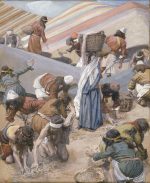
And the house of Israel called the name thereof manna; and it was like coriander seed, white; and the taste of it was like wafers
Do you like riddles? Here is a riddle – what do these two figures represent in the context of Exodus? No Idea? How about

As we have discussed in the post, It’s the time, stupid, Pharaoh never got the message that it’s all about mastery of time. To make
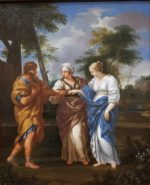
Reading the Torah, sometimes, can give a false impression of reading a story, albeit the greatest story ever written. This Divine drama involves colorful characters,

The story of entangled twins is continuing in the Torah portion Vayeitzei (Genesis 28:10–32:3.) Structurally, it is very similar to the story in the previous Torah
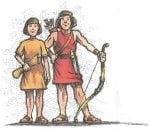
Entanglement is often called the most baffling and quintessential phenomenon in quantum mechanics. What is entanglement, in a nutshell? Two particles born from one reaction
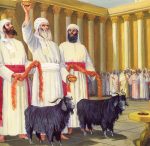
Some people may be fooled by randomness but, when we realize that randomness opens the door to the Divine, we are saved by randomness. It
By the mouth of two witnesses, or three witnesses, shall the one liable to death be put to death; he shall not be put to
Massei — Bamidbar-Numbers 35 Whoever kills a person, based on the testimony of witnesses, he shall slay the murderer. A single witness may not testify
Pinchas You shall apportion the Land among these as an inheritance, in accordance with the number of names. To the large [tribe] you shall give a

Speak to the children of Israel and have them take for you a perfectly red unblemished cow, upon which no yoke was laid… The cow

Koraḥ the son of Yitzhar, the son of Kehos, the son of Levi took [himself to one side] along with Dasan and Aviram, the sons
Acharei Mot 1. And the Lord spoke to Moses after the death of Aaron’s two sons, when they drew near before the Lord, and they
Vaikra-Leviticus 14:35-36 (Metzora) 35. and the one to whom the house belongs comes and tells the kohen, saying, “Something like a plague has appeared to
On the penultimate day of the Passover Holidays (which is called Shvii shel Pesach – the Sevenths Day of Passover), we read in the

And he dreamed, and behold! a ladder set up on the ground and its top reached to heaven; and behold, angels of G‑d were ascending
B’reshit bara Elokim et hashamaim v’et haaretz… In the beginning, G‑d created heaven and earth… Alternative translation: With two beginnings G‑d created heaven and earth…
On the Age of the Universe in the Many-Worlds Interpretation of Quantum Mechanics[*] Alexander Poltorak Abstract The present paper addresses the apparent discrepancy
Towards Reconciliation of Biblical and Cosmological Ages of the Universe[1] Alexander Poltorak Abstract Two opposite views of the age of the universe are considered.
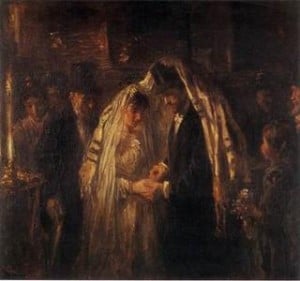
A story is told about a bachur (an unmarried young man) who came in the 60s to the Lubavitcher Rebbe for the yechidus (private audience)

And he shall take the two he goats, and place them before the Lord at the entrance to the Tent of Meeting. And Aaron shall

In the Torah portion Tazriah (Leviticus 13), the Schrödinger cat[1] gets leprosy. Well, it’s not really leprosy, it’s a mysterious supernatural disease called tzara’as, nowadays translated